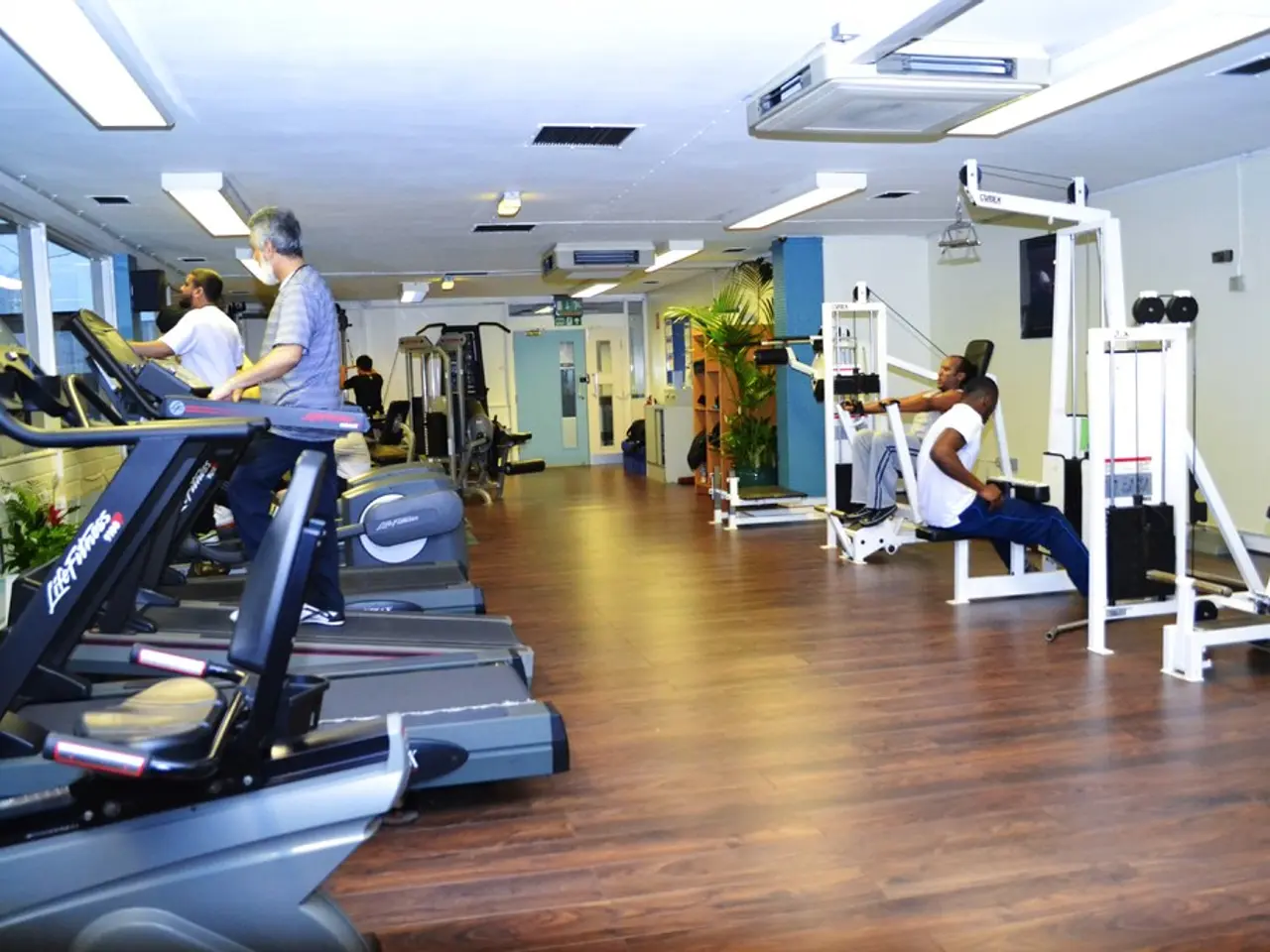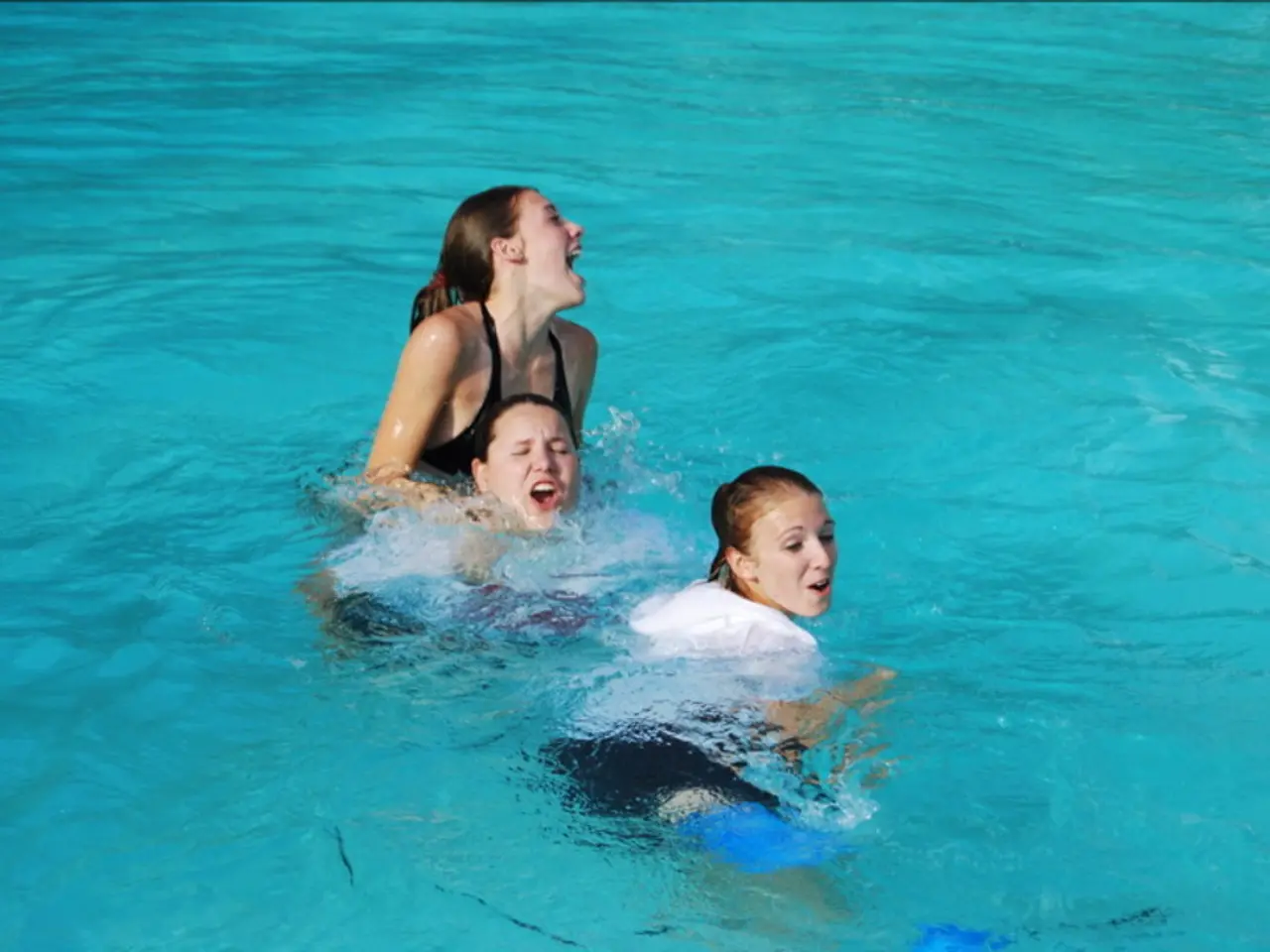Enhancing Balance and Spatial Perception through Physical Fitness
Targeted fitness exercises can significantly improve balance, coordination, and spatial awareness, making daily activities easier and safer. These exercises challenge the nervous system, enhancing proprioception (the body's sense of position) and strengthening core and stabilizer muscles.
Key Mechanisms
The effectiveness of these exercises lies in several key mechanisms:
- Neuro-muscular training engages the brain in processing sensory feedback to stabilize posture and coordinate movements, such as ankle and hip stability.
- Proprioceptive challenge enhances body awareness and joint control through activities that require sensing body position without visual cues.
- Cross-body and dynamic movements improve coordination between body sides and enhance spatial perception.
Effective Specific Exercises
Here are some exercises that can help improve balance, coordination, and spatial awareness:
Single-Leg Balance (with support)
This exercise challenges proprioception and ankle/hip stabilizers, training the nervous system to maintain equilibrium. It helps improve static balance, core stability, and rapid adjustment to shifts in balance.
- Stand on one foot, holding lightly on a support.
- Lift the other foot an inch.
- Hold for 10-30 seconds.
- Switch sides.
- Progress by reducing support.
Heel-to-Toe Walk (Tandem Walk)
This exercise forces precise coordination of foot placement and balance with vestibular system engagement. It improves dynamic balance, coordination, and proprioception.
- Walk placing heel of one foot exactly in front of toes of the other.
- Maintain gaze forward.
- Proceed slowly.
Reverse Lunge
This exercise builds lower body strength and stability, requiring controlled movement and balance. It enhances balance through strengthening legs and core, improves joint control.
- Step backward.
- Lower knee to 90 degrees.
- Push back up.
- Repeat on each side 8-12 times.
Tightrope or Straight-Line Walk
This exercise trains balance and coordination by narrowing the base of support. It improves body control and spatial accuracy.
- Walk along a taped or roped line, placing one foot directly in front of the other.
- Maintain balance throughout.
Tree Pose (Yoga)
This yoga pose strengthens standing leg muscles and demands focus and spatial awareness. It builds static balance, concentration, and muscle endurance.
- Balance on one foot.
- Place the other foot on the inner thigh/calf.
- Hold for 10–20 seconds per side.
"Superman" Proprioceptive Exercise
This exercise enhances body awareness and spatial orientation through limb lift and core engagement. It improves proprioception, core strength, and coordination.
- Lie on the stomach.
- Lift alternate arms and legs off the floor.
- Hold and repeat.
Jumping Jacks (Aerobic)
Jumping jacks increase overall coordination and cardiovascular health. They improve dynamic balance and body coordination.
- Perform 20 jumping jacks.
- Rest for 15 seconds.
- Repeat 3 sets.
- Make the exercise more challenging by closing your eyes.
Number Tracing (Tactile)
This exercise stimulates sensory perception and brain coordination, influencing motor control. It enhances sensory processing related to physical coordination.
- Trace numbers on your palm with your eyes closed.
Regular practice of these exercises simultaneously improves the brain-muscle connection, enhances sensory feedback processing, and develops the muscle strength necessary for stable, coordinated movements in space. As you progress, more complex exercises like lunges or agility ladder drills can yield even better results in both physical performance and mental clarity.
Fitness can lead to stress reduction, improved focus, and heightened cognitive functions, all of which contribute to better balance and spatial awareness. Incorporating balance and spatial awareness training into a fitness routine can enhance coordination, prevent injuries, and reduce the risk of falls, especially as we age.
Simple balance exercises, like standing on one leg or walking heel-to-toe, are excellent for beginners and help build a foundation for more complex movements. Flexibility exercises, like yoga or dynamic stretching, help maintain joint range of motion, reducing the risk of injury from falls or accidents. Strength training, particularly exercises like squats, deadlifts, and lunges, can improve balance by engaging multiple muscle groups and challenging the body's stability.
Engaging in sports like yoga, Pilates, or dance can improve balance and spatial awareness. Proprioception-focused exercises, like standing on one leg or using a balance board, enhance the body's awareness of its position relative to the ground, improving the ability to react quickly to shifts in the environment. Balance-specific exercises, such as standing on one leg or using a balance board, directly target balance and proprioception, leading to better stability and spatial awareness.
Boosting the vestibular system through dynamic movements can improve the brain's ability to process spatial information, enhancing balance and coordination. Improving proprioception through targeted exercises can help the body sense its position in space more effectively. Strengthening core muscles through fitness can improve stability and enhance overall balance.
Agility drills and sports-specific training can improve the ability to react to changes in the environment, enhancing both balance and spatial awareness. Stability tools, such as balance boards and BOSU balls, add an extra challenge to balance exercises, increasing proprioceptive awareness and improving coordination. Fitness can help prevent falls and injuries by improving balance, coordination, and agility.
- Neuro-muscular training enhances posture stabilization and movement coordination by engaging the brain in processing sensory feedback.
- Proprioceptive challenge exercises heighten body awareness and joint control through activities requiring senses of body position without visual cues.
- Cross-body and dynamic movements improve cooperation between body sides and spatial perception.
- The single-leg balance exercise, when practiced with support and progressively without, challenges proprioception and ankle/hip stabilizers while training equilibrium.
- The heel-to-toe walk improves dynamic balance, coordination, and proprioception with precise foot placement and vestibular system engagement.
- The reverse lunge build lower body strength and stability, enhancing balance, joint control, and overall movement coordination.
- The tightrope or straight-line walk narrows the base of support, training balance and coordination, and enhances spatial accuracy.
- The tree pose in yoga strengthens leg muscles, focuses the mind, and improves static balance, concentration, and muscle endurance.
- The "Superman" proprioceptive exercise improves body awareness, spatial orientation, proprioception, core strength, and overall coordination with limb lift and core engagement.




